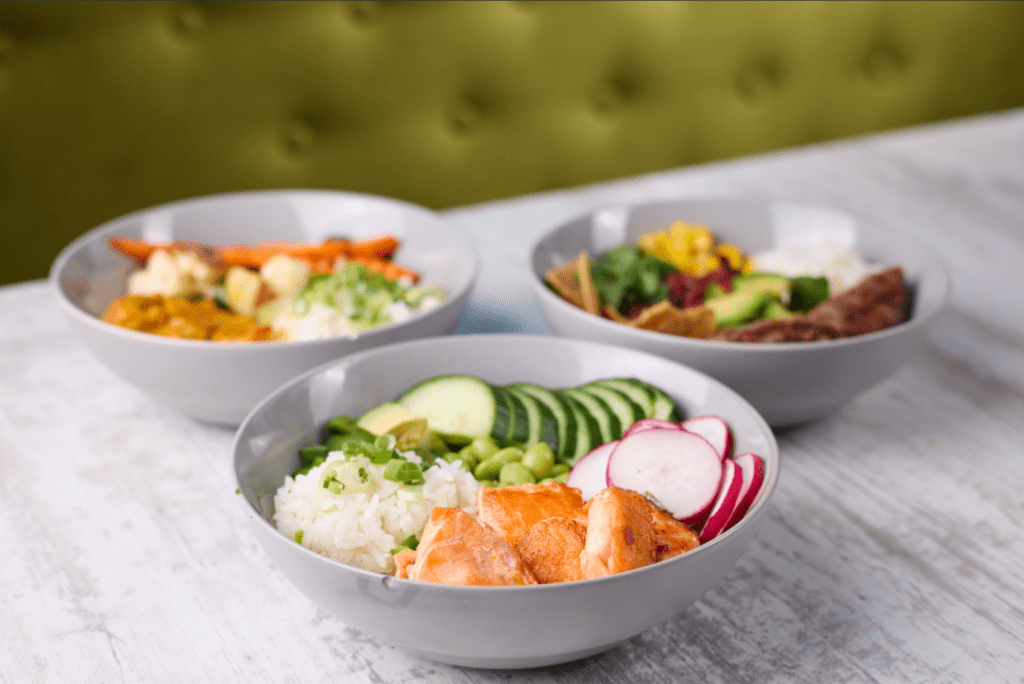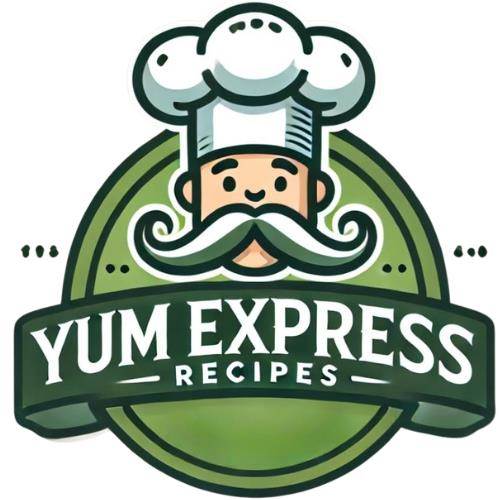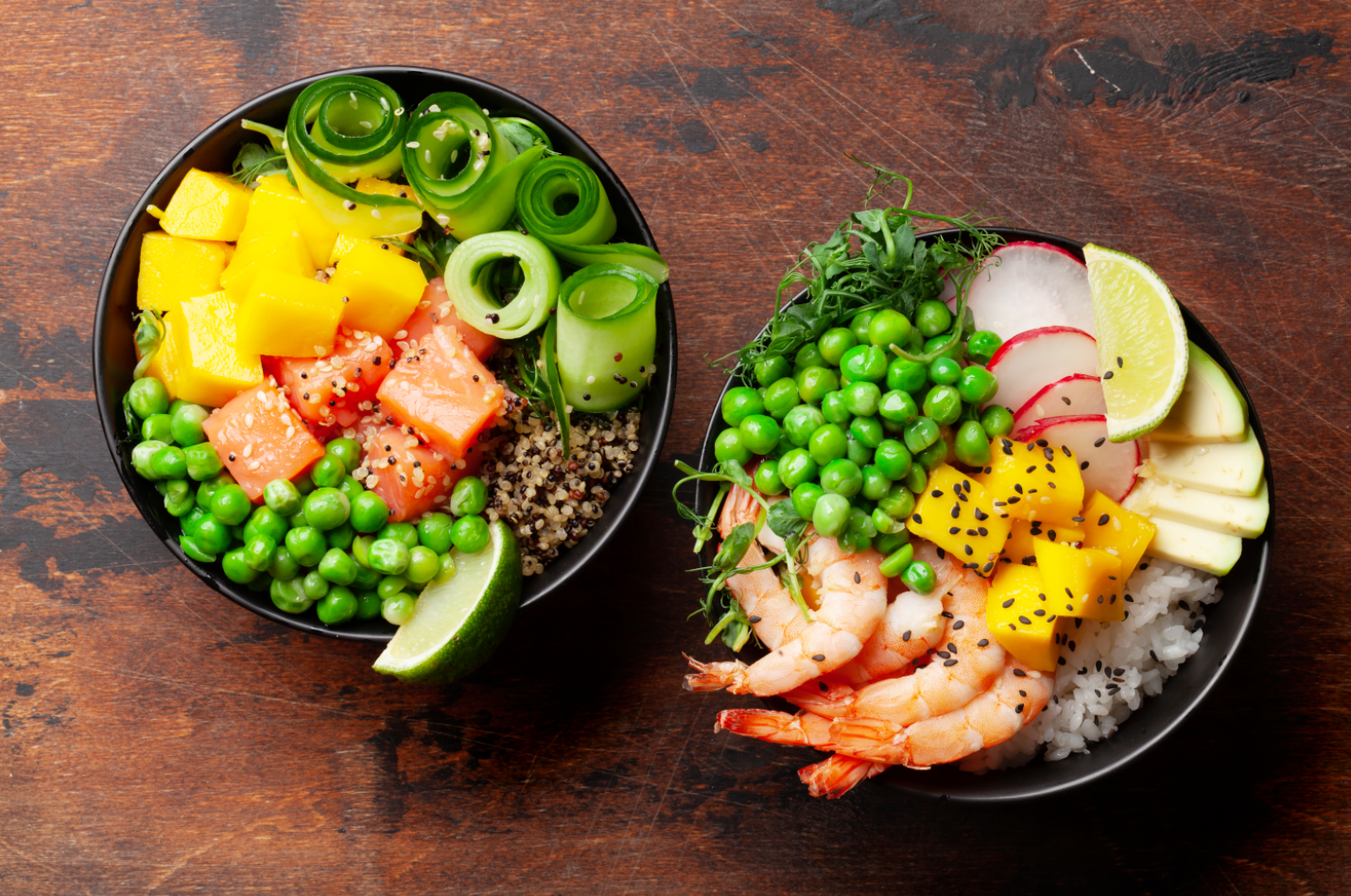A salmon bowl is a vibrant and nutritious meal that combines perfectly cooked salmon, fresh vegetables, hearty grains, and flavorful sauces into one satisfying dish. This versatile salmon bowl recipe is loved for its balance of taste, texture, and health benefits, making it the perfect choice for a quick lunch, family dinner, or even meal prep.
Why Salmon Bowls Are a Must-Try
- Nutrient-Packed: Rich in omega-3 fatty acids, high-quality protein, and essential vitamins, salmon bowls are as good for your body as they are for your taste buds.
- Customizable: From quinoa to rice, spinach to kale, and teriyaki to tahini sauces, you can mix and match ingredients to suit your preferences or dietary needs.
- Easy to Prepare: With minimal cooking time and simple techniques, salmon bowls are a stress-free option for busy days without sacrificing flavor.
Salmon bowls are a perfect way to enjoy a wholesome, colorful meal that’s as delicious as it is nourishing. Let’s dive into the ultimate recipe and create your new favorite dish!

What is a Salmon Bowl?
History of the Salmon Bowl
The concept of a salmon bowl originates from the global trend of combining wholesome ingredients into a single, flavorful dish. While its roots can be traced to traditional Japanese cuisine, particularly sushi bowls like chirashi, the modern salmon bowl has evolved to incorporate elements from diverse culinary traditions. With influences from poke bowls, grain bowls, and even Buddha bowls, this dish has become a global favorite for its adaptability and health-focused appeal.
The Modern Salmon Bowl Trend
In recent years, salmon bowls have gained immense popularity as part of the broader “bowl food” trend. These dishes prioritize fresh, nutritious ingredients arranged beautifully in a single bowl, offering a visually appealing and balanced meal. Instagram-worthy and customizable, salmon bowls have found their way into restaurants, meal prep routines, and home kitchens as a go-to option for health-conscious food lovers.
Why Choose Salmon Bowls?
Nutritional Benefits of Salmon
Salmon is a powerhouse of nutrition, making it an excellent base for these bowls:
- Rich in Omega-3 Fatty Acids: Supports brain health, reduces inflammation, and promotes heart health.
- High in Protein: Provides essential amino acids for muscle repair and growth.
- Packed with Vitamins and Minerals: Loaded with vitamin B12, selenium, and vitamin D for energy, immune support, and bone health.
Versatility of Ingredients
One of the best aspects of salmon bowls is their adaptability:
- Base Options: Choose from quinoa, rice, farro, or greens to set the foundation.
- Vegetable Variety: Add fresh, roasted, or pickled veggies like avocado, cucumbers, radishes, or broccoli.
- Flavor Enhancers: Top with sauces like teriyaki, soy-ginger, or creamy sriracha, and finish with garnishes like sesame seeds, green onions, or fresh herbs.
Time-Saving Meal Option
Salmon bowls are a quick and easy meal that doesn’t compromise on taste or quality:
- Minimal Cooking Time: Salmon cooks in under 15 minutes, making it a fast protein option.
- Meal Prep Friendly: Prepare ingredients in advance and assemble when ready to eat.
- One-Dish Wonder: With everything served in one bowl, cleanup is a breeze.
Salmon bowls are a perfect blend of convenience, nutrition, and flavor, making them an ideal choice for anyone seeking a balanced and delicious meal.
Ingredients for the Perfect Salmon Bowl
Choosing Fresh Salmon
The quality of the salmon is key to a flavorful and satisfying bowl:
- Freshness Indicators: Look for bright, firm flesh with no fishy odor. The skin should be shiny, and the flesh should bounce back when pressed.
- Types of Salmon: Wild-caught varieties like sockeye or king salmon offer richer flavor and higher nutritional value, but farmed salmon can also work if sourced responsibly.
- Preparation: Remove any pin bones and pat the salmon dry for even cooking.
Base Options (Rice, Quinoa, etc.)
The base provides structure and a hearty element to the salmon bowl:
- Rice: White, brown, or jasmine rice offers a neutral base that pairs well with most flavors.
- Quinoa: A protein-packed, gluten-free option with a nutty taste.
- Greens: Spinach, arugula, or kale for a lighter, low-carb alternative.
- Other Grains: Farro, couscous, or barley add texture and variety.
Fresh Vegetables and Toppings
Add color, crunch, and nutrients with a variety of vegetables and toppings:
- Vegetables: Cucumbers, avocado, cherry tomatoes, shredded carrots, edamame, or roasted sweet potatoes.
- Toppings: Pickled onions, sesame seeds, nori strips, green onions, or fresh herbs like cilantro.
- Optional Protein Boost: Hard-boiled eggs, tofu, or beans can add extra protein.
Dressing and Sauces
The right sauce ties all the elements together:
- Classic Choices: Soy-ginger, teriyaki, or creamy sesame.
- Spicy Options: Sriracha mayo or chili garlic sauce.
- Citrus-Based: Lemon-tahini or lime-cilantro vinaigrette for a zesty finish.
Step-by-Step Recipe Guide
Preparing the Salmon
- Season the Salmon:
- Rub the fillets with olive oil and season with salt, pepper, and optional spices like garlic powder or paprika.
- Optional Marinade:
- For extra flavor, marinate the salmon in a mix of soy sauce, honey, and grated ginger for 20 minutes before cooking.
Cooking Techniques: Grilled, Pan-Seared, or Oven-Baked
- Grilled: Preheat the grill to medium-high. Place the salmon skin-side down and grill for 5-7 minutes, then flip and cook for another 2-3 minutes.
- Pan-Seared: Heat a non-stick skillet over medium-high heat with olive oil. Cook the salmon skin-side down for 4-5 minutes, flip, and cook for another 2-3 minutes.
- Oven-Baked: Preheat the oven to 375°F (190°C). Place the salmon on a baking sheet lined with parchment paper and bake for 12-15 minutes.
Preparing the Bowl Base
- Cook the Base:
- Prepare rice, quinoa, or other grains according to package instructions.
- Greens Option:
- Wash and dry greens if using a salad base.
- Seasoning the Base:
- Toss with a drizzle of olive oil, salt, and a squeeze of lemon for added flavor.
Assembling the Bowl
- Start with the Base:
- Add your cooked grains or greens as the bottom layer.
- Add Vegetables:
- Arrange fresh, roasted, or pickled vegetables around the bowl for color and variety.
- Place the Salmon:
- Lay the cooked salmon fillet on top of the base and vegetables.
- Drizzle the Sauce:
- Finish with your chosen dressing or sauce for a burst of flavor.
- Garnish:
- Sprinkle with toppings like sesame seeds, nori strips, or fresh herbs.
With these steps, you’ll have a delicious, balanced salmon bowl ready to enjoy—perfect for any meal!
Tips for Customizing Your Salmon Bowl
Dietary Restrictions: Gluten-Free, Low-Carb Options
- Gluten-Free: Use tamari or coconut aminos instead of soy sauce for marinades and dressings. Ensure your grains, like quinoa or rice, are certified gluten-free.
- Low-Carb: Swap out grains for leafy greens like spinach or arugula, or try cauliflower rice or zucchini noodles as a base.
Adding Global Flavors
Incorporate international influences to give your salmon bowl a unique twist:
- Asian-Inspired: Use teriyaki or soy-ginger sauce with edamame, pickled ginger, and sesame seeds.
- Mediterranean: Add hummus, tzatziki, kalamata olives, and roasted red peppers with a lemon-herb dressing.
- Mexican: Include black beans, corn, avocado, and a spicy chipotle-lime crema.
- Middle Eastern: Try a tahini drizzle with roasted chickpeas, sumac, and tabbouleh.
Perfect Pairings: Beverages and Side Dishes
Complete your meal with thoughtful pairings:
- Beverages: Pair with sparkling water infused with citrus, a crisp white wine like Sauvignon Blanc, or a light beer.
- Side Dishes: Complement the bowl with miso soup, roasted asparagus, or a small green salad for a balanced meal.
Common Mistakes and How to Avoid Them
Overcooking the Salmon
- Problem: Overcooked salmon becomes dry and loses its flaky texture.
- Solution: Use a meat thermometer to ensure the salmon reaches an internal temperature of 145°F (63°C). Remove it from the heat as soon as it flakes easily with a fork.
Improper Ingredient Ratios
- Problem: Too much or too little of any component can disrupt the balance of flavors and textures.
- Solution: Aim for equal portions of grains, vegetables, and protein to create a well-rounded bowl. Use a variety of textures, such as crunchy toppings with creamy sauces.
Dressing Missteps
- Problem: Overdressing can make the bowl soggy, while underdressing leaves it dry and bland.
- Solution: Start with a small amount of dressing and toss the base and vegetables lightly before adding more if needed. Serve additional dressing on the side for those who prefer extra flavor.
By customizing your salmon bowl and avoiding common mistakes, you can create a dish that’s perfectly tailored to your taste, beautifully balanced, and packed with flavor every time!
 Frequently Asked Questions
Frequently Asked Questions
Can I Use Canned Salmon?
Yes, canned salmon can be used as a substitute for fresh salmon in bowls:
- Preparation: Drain the canned salmon and flake it with a fork. Remove any skin or bones if desired.
- Usage: Mix with spices or dressings like lemon juice and olive oil for added flavor. It works best in cold bowls or salads.
- Convenience: Canned salmon is an affordable and shelf-stable option for quick meals.
What’s the Best Way to Store Leftovers?
Proper storage ensures your salmon bowl stays fresh for the next meal:
- Separate Components: Store salmon, grains, vegetables, and dressing in separate airtight containers to preserve texture and flavor.
- Refrigeration: Keep leftovers in the refrigerator for up to 3 days.
- Reheating: Reheat only the salmon and grains. Fresh vegetables and dressings should be added after warming.
How Do I Ensure My Bowl Stays Fresh for Meal Prep?
Meal prepping salmon bowls requires a few smart strategies:
- Layering: Place wet ingredients like dressings at the bottom of the container and keep greens or crispy toppings at the top to prevent sogginess.
- Use Sturdy Veggies: Opt for vegetables like carrots, broccoli, or cucumbers that hold up well in the fridge.
- Pack Dressing Separately: Add dressings or sauces right before eating to maintain freshness.
What Sauce Goes with Salmon?
Salmon pairs well with a variety of sauces that enhance its flavor:
- Classic Choices: Lemon butter, dill cream sauce, or teriyaki.
- Spicy Options: Sriracha mayo, chili garlic sauce, or wasabi aioli.
- Citrus-Based: Lime-cilantro vinaigrette or orange-ginger glaze for a zesty touch.
Can I Eat Raw Salmon in a Poke Bowl?
Yes, raw salmon is commonly used in poke bowls, but it must be handled safely:
- Sushi-Grade Salmon: Ensure the salmon is labeled sushi-grade or safe for raw consumption.
- Storage: Keep raw salmon refrigerated and consume it within a day of purchase.
- Handling: Use clean utensils and surfaces to prevent contamination.
What Veggies Go with Salmon?
Salmon is versatile and pairs well with many vegetables:
- Fresh Options: Cucumbers, avocados, cherry tomatoes, radishes, or mixed greens.
- Roasted Vegetables: Broccoli, asparagus, sweet potatoes, or brussels sprouts.
- Pickled or Fermented: Pickled onions, kimchi, or sauerkraut add tangy contrasts.
These FAQs address common concerns and provide practical tips to make your salmon bowl preparation seamless and enjoyable.
Conclusion
Final Thoughts on Creating a Perfect Salmon Bowl
Salmon bowls are a delightful combination of nutrition, flavor, and creativity. Whether you’re crafting a quick meal for yourself or preparing an impressive dish for guests, their versatility makes them an ideal choice for any occasion. From choosing fresh, high-quality salmon to customizing your bowl with grains, vegetables, and sauces, every step offers an opportunity to tailor the dish to your tastes and dietary needs.
These bowls are more than just a meal—they’re a canvas for experimenting with global flavors, vibrant colors, and diverse textures. With minimal cooking time and endless customization options, salmon bowls are perfect for busy days, meal prep, or even special occasions.
Embrace the simplicity and deliciousness of a well-made salmon bowl. Start with the basics, get creative with your ingredients, and enjoy a dish that’s as wholesome as it is satisfying. Happy cooking!

